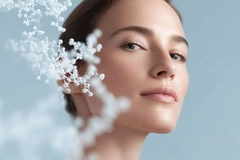dsm-firmenich’s Scentmate reveals top scent trends for spring and summer

Scentmate by dsm-firmenich, a digital platform driving industry fragrance innovation, has identified that three olfactory scents — fruit, vanilla, and magnolia — will influence the fine fragrance market this spring and summer.
The report highlights key consumer insights driving these scent trends. According to Scentmate, women continue to be the largest consumers of fragrance (62.85%), with men and Generation Z emerging as influential demographics. The platform also reports that 83% of Gen Z individuals use fragrance regularly, positioning them as a core audience for future fragrance development.
Additionally, emotional well-being is influencing consumer fragrance choices, with four out of five noting that wearing fragrances can alter their emotional state. Shifting lifestyle trends are driving consumer demand for perfumes designed for daily wear, prioritizing long-lasting performance and the preference for scents containing sustainable, non-toxic ingredients.
The company forecasts a 5.9% growth in the fine fragrance sector from 2023 to 2030, driven by movement toward highly concentrated and premium fragrances.
Spring-summer scents
Scentmate confirms the trend of elevating fruit scents to more sophisticated profiles for spring-summer 2025. Fresh, natural fruit notes like mandarin, kumquat, and yuzu will dominate, paired with pear, apple, and melon. Examples include Jean Paul Gaultier’s Le Male Pride with yuzu, blood orange, and white woods and Hermès H24 Herbes Vives, blending pear granita, herbal notes, and lime.
 Scentmate reveals how shifting lifestyle trends are impacting fragrance development.Secondly, the floral scent of magnolia, traditionally associated with Chinese culture is gaining significance and will be used to create premium perfumes with a delicate scent. Combined with green vegetables, fruit, and spicy notes Scentmate claims the smell creates a unique, complex fragrance combination.
Scentmate reveals how shifting lifestyle trends are impacting fragrance development.Secondly, the floral scent of magnolia, traditionally associated with Chinese culture is gaining significance and will be used to create premium perfumes with a delicate scent. Combined with green vegetables, fruit, and spicy notes Scentmate claims the smell creates a unique, complex fragrance combination.
Lastly, according to Scentmate, the nostalgic influence of vanilla will also impact the development of spring-summer fragrances. New olfactory compositions will produce a more intense ingredient offering, unlike traditional sweet vanilla notes. When blended, vanilla complements balsams, woods, and original accords.
Evolving fragrance trends
As consumer preferences shift and sustainability awareness rises, global fragrance markets are evolving. According to 2025 data from market researcher Innova Market Insights, fragrance behaviors are diversifying, with digital platforms playing a crucial role in discovery. Forty-one percent of consumers compare prices online, 23% seek brand information, and 25% read reviews before purchasing.
A shift toward beauty products formulated with sustainable ingredients and planet-friendly packaging is increasingly influencing fragrance launches with eco-conscious Gen Z consumers being a driving force within the “clean beauty” category. The report records a 65% growth rate in natural fragrance launches from October 2019 to September 2024. Cruelty-free perfume launches and fragrances with no animal-derived ingredients are showing significant growth within the five-year period.
Earlier this year, Skylar Clean Beauty introduced Nude Skin, a hypoallergenic fragrance aimed at conscious consumers. Skylar’s formulations are vegan, cruelty-free, and free from ingredients sourced from endangered plant species. The packaging is made from FSC-certified paper, sourced from sustainably managed forests.
Meanwhile, minimalist routines in the UK and France are driving demand for subtle, clean, intimate fragrances with “skinimalist” scent claims accounting for 15% of product launches in the UK and France over the past five years.
Consumers are seeking new scent experiences, with social media fueling the rising trend of hair perfumes. The wellness industry also continues to shape fragrance development, driving demand for calming scents that enhance relaxation like lavender, chamomile, and eucalyptus.













